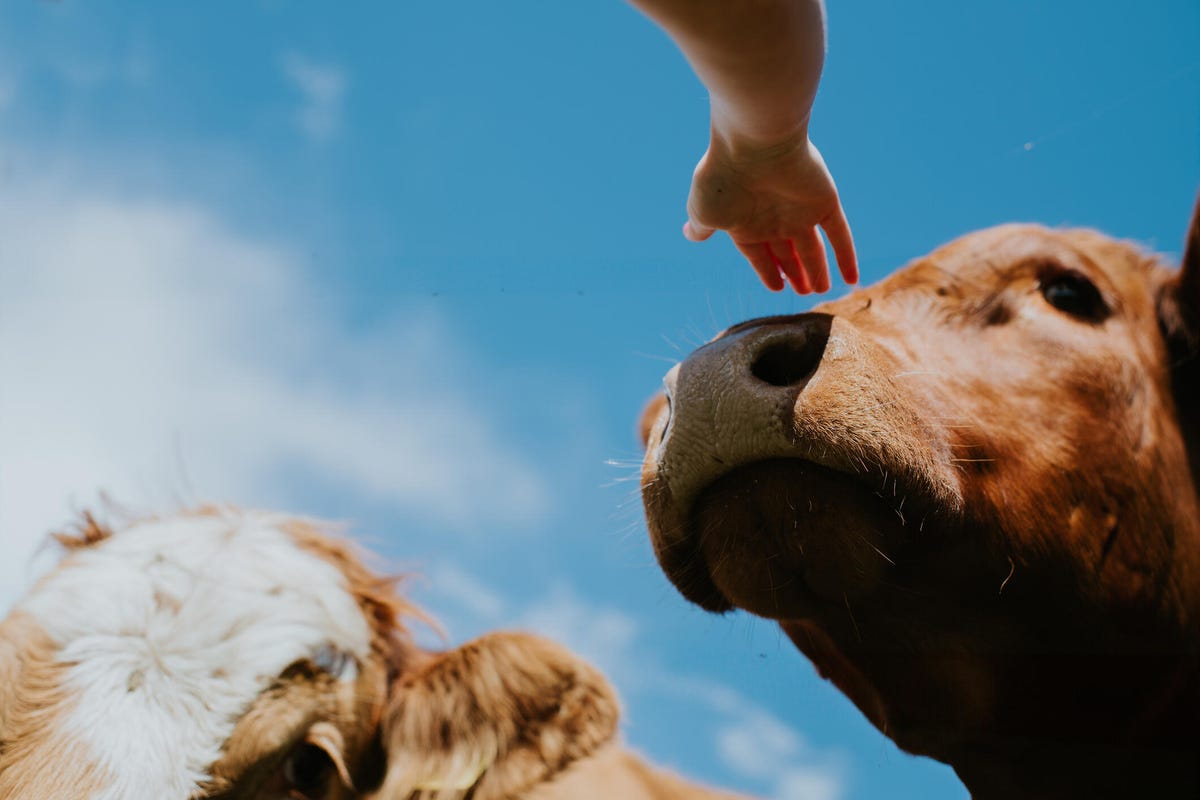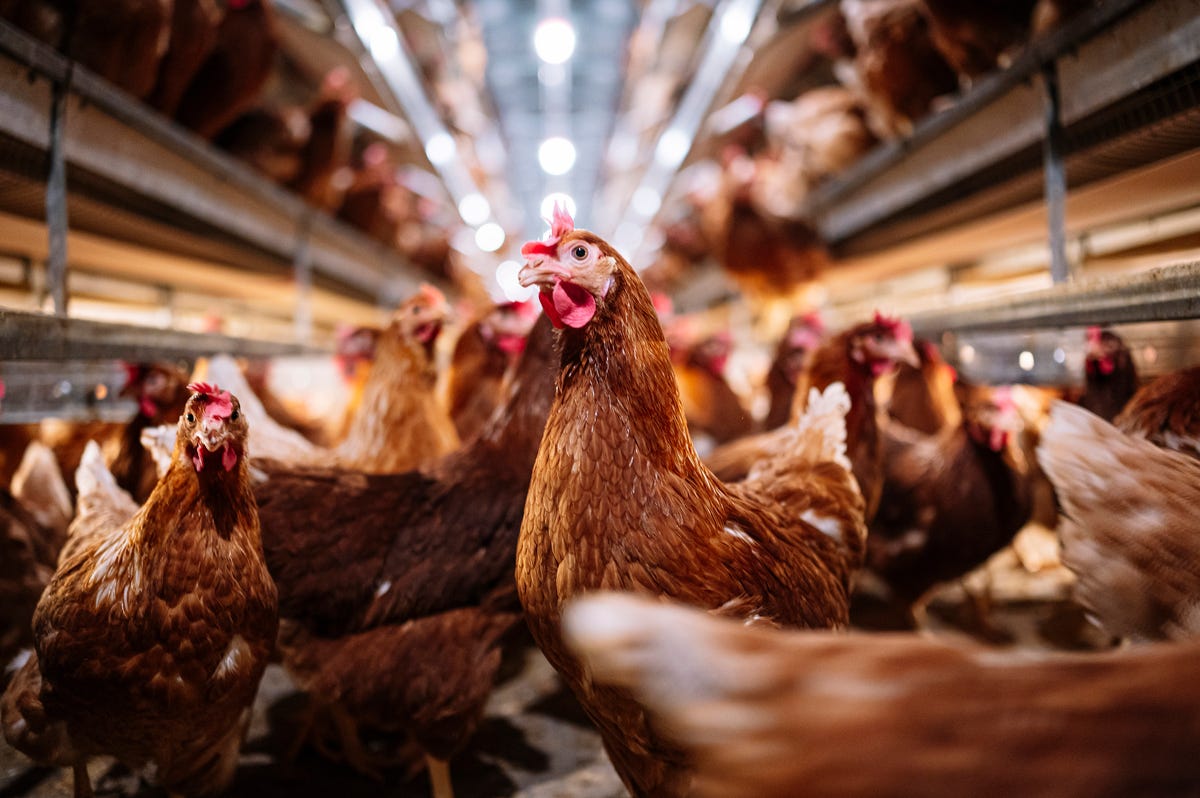A person in Missouri was sick with bird flu, or avian influenza, but as of now doesn’t have a known exposure to animals in the ongoing bird flu outbreak, according to a Friday news release from the US Centers for Disease Control and Prevention.
While the CDC said that the bird flu risk to the general public remains low, it’s the first time the CDC’s national flu surveillance system has detected a H5 virus, which is the type of flu currently driving the outbreak among birds and cattle in the US. The other 13 cases of H5 were detected in “targeted” surveillance of people have been in people who’ve worked directly with sick animals, according to the CDC.
The person who was sick had underlying health conditions, was hospitalized and has since recovered, the CDC reported. No other transmission has been found among contacts, and there’s been no sign of unusual flu activity in people, which would suggest a bigger public health threat. An investigation is ongoing, as more information is needed about the strain the patient was sick with.
“It is important to note that, while rare, there have been novel influenza A cases where an animal source cannot be identified,” the CDC said in its release, referencing the type of influenza the bird flu outbreak strain belongs to. But ongoing investigation into the case will be “particularly important,” the CDC said, “in light of the current lack of an obvious animal exposure.”
It started out ravaging the US poultry industry in 2022, but bird flu made the jump to US cattle this year and has been impacting the dairy industry since spring, thinning the virus’ line between where it’s stayed so far (spreading between animals) and contact with humans. Health officials have been taking steps to curb the spread of avian influenza (specifically, H5N1 or “bird flu”) by ramping up their monitoring of the virus and preparing for the worst-case scenario. The US Department of Health and Human Services announced in early July that the government is providing Moderna $176 million to develop its influenza mRNA vaccine, which could be used in the case bird flu ever became a pandemic or starting spreading person-to-person.
As long as animals and humans live, work and gather around each other, there will be a risk of viruses mutating enough to make the jump from species to species. Fortunately, bird flu in humans so far has been rare, in part because the virus doesn’t spread that easily from animals to humans, or between humans, although sporadic cases have occurred in other countries as well as the US.
Here’s what to know about bird flu, or avian influenza, and what it looks like in people.

Bird flu started as a poultry and bird issue in the US but has spread to cows, which frequently have close contact with people and further the risk of the virus making the jump to humans one day.
What is bird flu?
In short, bird flu, aka avian influenza, is a type of flu that spreads between some animals and is currently causing outbreaks among birds and cattle in the US. Scientists are watching it closely for mutations that could make it easier to spread between people, because while it isn’t currently able to spread between people, if it gained the ability to do so it would pose a major public health threat.
More specifically, bird flu is a disease caused by infection with an influenza type A virus, and is either “highly pathogenic” or “low pathogenic;” the current H5N1 outbreak strain among animals is highly pathogenic.
Bird flu was first detected and controlled in 1997, but it reemerged in 2003 and started spreading widely among birds.
The World Health Organization reports four types of influenza viruses: A, B, C and D. Type A viruses, which occur in both humans and different kinds of animals, are the biggest threat to public health and can cause pandemics, the WHO says. The “swine flu” of 2009’s pandemic was caused by a type A virus. Seasonal flu viruses in humans are caused by type A and type B viruses.

Bird flu has been ravaging the US poultry industry for the last couple of years, resulting in the culling (killing) of millions of infected or potentially infected birds.
Is bird flu deadly? How many cases have there been in the US?
With the additional case in Missouri, there have been 15 human cases of H5 (highly pathogenic) bird flu in the US since the bird flu outbreak began. Fourteen of them are from this year.
Human cases remain rare, but bird flu is considered a serious threat to public health because of its historically high mortality rate — about half of bird flu H5N1 in people have resulted in death since tracking began, according to WHO information. No deaths from bird flu have been reported in the US; people who’ve tested positive for the virus historically have had direct contact with sick animals and exhibited mild symptoms.
Earlier this summer, a handful of mild bird flu cases in farm workers from Colorado who had direct contact with sick birds were discovered. While they weren’t the first human cases, the new cluster of cases prompted more concern the virus may one day start spreading from person to person and pose a greater health threat to people. It also called attention to the way some people are tasked with handling affected birds in potentially dangerous ways and the risks to their health, as NPR reported.
Can I get bird flu from milk, eggs or meat?
There haven’t been any reports of people getting bird flu in the US from drinking milk or eating meat from birds or cows. The commercial food supply, which makes up most food you’d get in a regular grocery store, is regulated and meat from impacted animals shouldn’t make it to store shelves.
There have been fragments of inactive bird flu virus found in pasteurized milk samples since the virus started spreading to cows, the high-temperature pasteurization process inactivates any virus or bacteria, including bird flu, that could make people sick. Infectious virus has been found in raw milk, and the US Food and Drug Administration is reiterating the general health risks of drinking raw milk, not just in terms of bird flu but also for other pathogens that often live in unpasteurized milk.
In terms of meat, cooking ground hamburger meat is also expected to inactive or kill the bird flu virus, according to the Department of Agriculture. The same is true for poultry; according to the CDC, cooking eggs and poultry to an internal temperature of 165 degrees Fahrenheit kills viruses, including bird flu.
Beyond cooking your food thoroughly, it may be difficult to catch influenza from food or drinking sources anyway, according to infectious disease experts we’ve spoken to in the past since influenza (which bird flu is) is a respiratory virus.
If you work directly with animals or livestock, which would include the event you work on a farm or even visit a fair where there’s livestock, the CDC has specific tips for safety to reduce the risk of spread.








